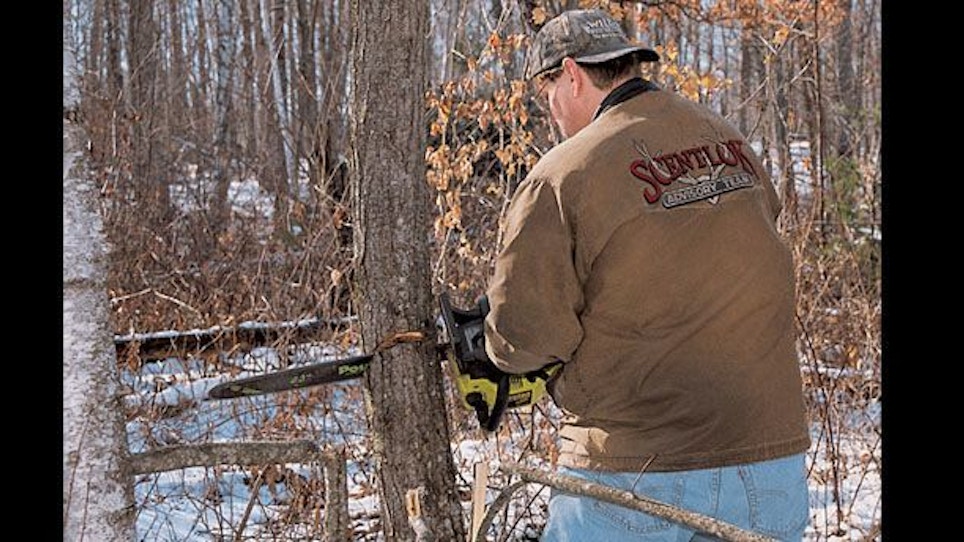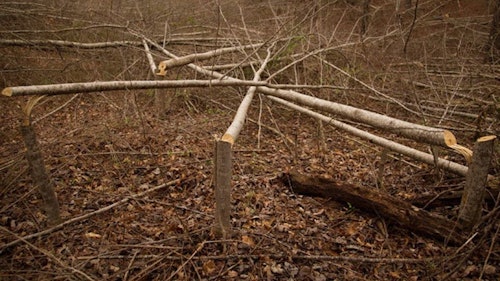Making Deer Bedding Areas
Most whitetail non-rut travels are between bedding and feeding. Just as we can affect feeding locations with food plots and more desirable native forages, we can also have a significant affect on bedding locations.
To create a whitetail bedding area, you'll need a chain saw, appropriate safety equipment and a good amount of elbow grease. First, select an acre of woods and then proceed to cut the trees within. When making the cut, begin it about 3 feet from the ground and cut down at a 45-degree angle, stopping about three-fourths of the way through. Now, the tree can be pushed over, or left for the wind to do it.
Called a hinge cut, one of its goals is to allow the branches to maintain a connection to the root system. Using this technique allows certain species, such as maples and oaks, to bend without completely breaking. With the hinge-like connection, the tree will to continue to grow, albeit at a much slower pace. To increase chances of survival, the cutting should be done in the winter, well before leaf-out. Keep in mind that some trees, such as poplar, birch and most pines, will often snap as they fall, but their tops still provide good bedding cover.
This technique immediately creates a thick tangle of cover, as well as a bounty of food. The forest floor receives increased sunlight, which promotes the growth of new greenery and saplings. Along with that, the hinge-cut trees that retain the root connection provide leafy growth for browse and buds during winter months.
To make these locations better still, we need to understand what deer seek for bedding. Although there are exceptions, you will find that most bedding sites offer a combination of:
• At least two escape routes.
• Either thick cover or good visibility.
• Conditions allowing them to use their sense of smell to cover their back.
Hinge cuts done with a plan provide the cover deer seek. Putting these efforts into locations that meet the other criteria on our list almost guarantees that deer will use them for bedding.
For example, let’s say we have a food plot along a creek bottom, flanked by ridges on each side. Applying our hinge-cutting technique on the ridge side, just below the crest, would give them everything they desired. Not only do they have the thick cover, the slope also provides visibility. By creating a bedding area on the sides of both ridges, deer would be able to choose which allowed the wind current to best cover them from the backside of the ridge. If they sensed danger, they could drop down, cut over, or dash along the ridge in either direction. Because Mother Nature rarely provides all of this, deer will pack into our constructed bedding sites.








